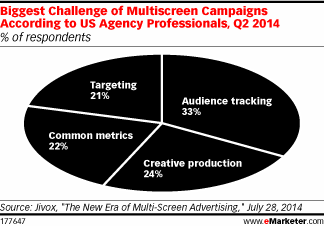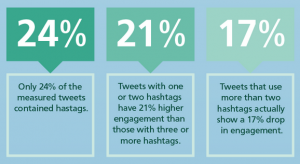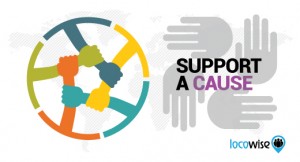
For a digital marketer, every day can be a game changer, as new developments in technology keep pushing the limits on how you can engage and interact with your always-connected target audience.
2015 is no exception – marketing strategies and tools are tested once more, with the ‘Internet Of Things’ setting new standards in online and offline interactions with customers. We took a close look at experts’ predictions for digital marketing trends in 2015, combining them with our inbound marketing know-how and discovered what we believe to be three essential trends coming our way this year. Here they are:
- Omni-channel marketing
“The way that many are explaining omnichannel today is: ‘cross channel being done well.”
Omni-channel is about customer experience and how brands can deliver unified experiences across all channels by answering their customer’s needs and desires. As we switch from our phone at home, to our tablet at the office and later to a brick-and-mortar construction, we expect to have a cohesive experience that removes unnecessary actions and makes us happy customers.
From the consumer’s point of view it’s only natural to expect these kind of experiences in this day and age; but for brands, it’s an immense effort that requires strategy, innovation and a firm grip on tech development. Although this type of marketing started in the B2C sector, a recent study by Forrester shows that B2B buyers expect the same level of omni-channel service from their suppliers. B2B companies recognize that customers expect omni-channel capabilities to be offered as standard, driven by the need for a superior customer experience. Here’s what the study revealed:
- Nearly half (49 percent) of B2B buyers surveyed prefer to make work-related purchases on the same websites they use for personal purchases;
- They begin their research on brand manufacturer sites (32 percent) and search engines (25 percent) and even expect more work-related purchases to be completed online in the next three years;
- More than half (52 percent) of buyers surveyed expect one out of two of their purchases to be made online in three years’ time.
Here are three key principles of omni-channel marketing that you should base your strategy on, from Omnichannel.me:
- In exploring and discovering products in your brand domain that data should be transferable for me to collect and use universally.
- In exchange for this data, the customer will give you access to other data they have collected that will far outweigh the value of the limited data in your brand universe.
- All experiences offline and online should allow an individual to identify themselves and present a brand with the opportunity to access my preferences.
“More than ever, successful execution is dependent upon integrated solutions and data-driven programs, which enable data to work across the organization throughout the customer lifecycle. (…) Brands now understand that real engagement is a 360° journey that starts with a cross-functional strategy, well before touching the customer.” – Carla Bourque (CEO of Smartify), VentureBeat
Data is a key aspect of omni-channel marketing – collecting it, analyzing it and delivering the right message at the right time and, of course, to the right customer. Currently, CMOs reportedly spend only eight percent of their budget on marketing analytics.
2. Cross-device strategies
Designing for mobile-first isn’t enough. 2015 marketers have to think bigger than this – start designing consistent experiences across all devices. Cross-device is an omni-channel imperative.
The ‘ Internet of Things ’ is changing the the way we connect with our customers dramatically. In 2013 there was an estimated 13 billion Internet-connected devices such as PCs, Laptops, Smartphones, Tablets, etc. According to Cisco , in 2020 there will be 50 billion connected devices, which will include phones, TVs, chips, sensors, implants and devices that have yet to be produced.
Our prospects are on more devices than ever, and smart phones are increasingly becoming the no.1 device that they rely on. Of the world’s 7 billion people, 4.55 billion were using mobile phones in 2014. Tablet use is also on the rise, with 147.2 million U.S. consumers using tablets in 2014, up from 132.2 million in 2013.
The biggest challenge concerning cross-device marketing is setting an identification tag that can recognize the same individual across all digital screens, operating systems and browsers. On the same note, digital display ad platform Jivox conducted a 2014 study in which more than half of respondents (54 percent) cited audience tracking and targeting as the biggest impediments to multiscreen advertising (in the U.S.).

3. Native video advertising
Native video ads are content-based and delivered within the natural online experience of a website or platform. In a study by Sharethrough and Nielsen, in 2013 native advertising showed higher brand lift across all the campaigns featured in the study.
According to a survey of 127 client-side marketers by the Association of National Advertisers (ANA), 63 percent of marketers say they’ll be spending more on native advertising this year.
“Native advertising is proving to be a win for marketers, consumers, and publishers.” – Bob Liodice, president and CEO of the ANA, Marketingland
An opportunity that Facebook and Twitter are planning to amply exploit this year, by hosting video content natively on their own platforms. Facebook, in particular, has already stated its claim on native video advertising, slowly pushing Youtube out of the equation, while Twitter is still experimenting.
Further more, the first programmatic platform for inserting native video ads into content feeds of apps has just been launched by the ad tech firm Inneractive . The platform, called Story, enables automated buying and selling of ads, governed by adjustable parameters.
“The in-feed programmatic native video [ad] format is something new. (…) The combination of native and programmatic is very unique.” – CEO and cofounder Offer Yehudai, VentureBeat
For B2B companies, native video advertising can be a highly effective strategy for both brand positioning as well as lead generation. Research shows that organizations relying predominantly on inbound marketing practices (such as native advertising) experience a cost per lead that is 2.5 times less than organizations using outbound marketing techniques ( Source ). To that effect, social media platforms are an inherent part of content marketing and have been referred to as the most popular tactic for B2B organizations.
It’s no surprise that all these trends are inherently linked to advances in technology and the Internet of Things. We’ve become highly connected through dozens of devices that give us immediate access to the brands we want to engage with.
The key element that brings these digital marketing trends together is a remarkable customer experience. Marketers are challenged to unify online and offline experiences, in a cross-device omni-channel strategy to deliver personalized experiences that foster brand loyalty.
Is your company ready for these trends?
(330)





